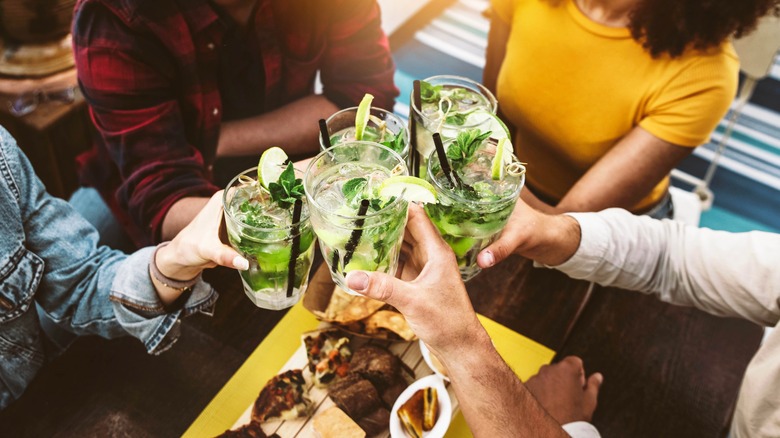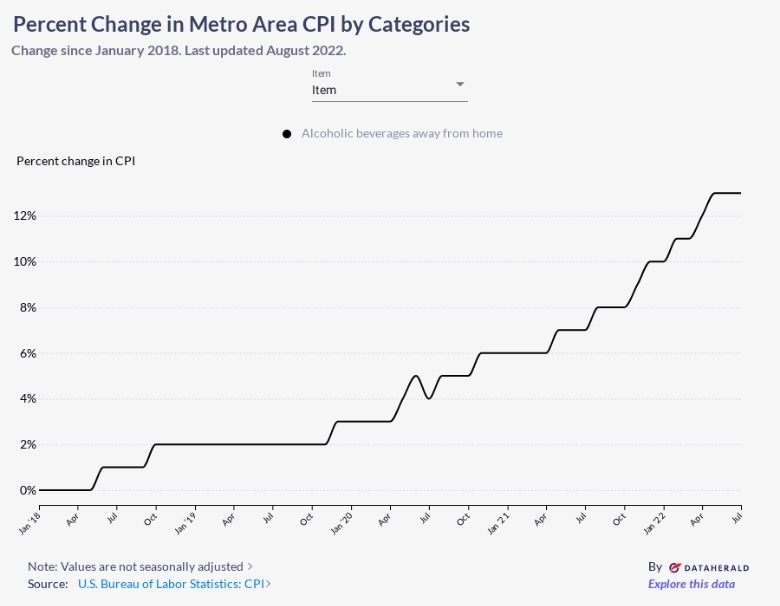Latest Data Reveals The Cost Of Going Out For Drinks Could Continue To Rise
One of the industries hit hardest by the coronavirus pandemic was the bar and restaurant industry.
According to Fortune, more than 110,000 bars and restaurants across the U.S. closed down (temporarily or permanently) in 2020. NPR reports that bars and nightclubs were quickly labeled one of the most dangerous locations for those trying to avoid the virus due to the high concentration of people in small areas. Because of this, the once vibrant bar scenes in many cities were effectively shut down or highly limited. Many states, like New York, even began to allow carry-out cocktails in an attempt to offer bars a way to boost revenue without boosting positive cases, a policy that was so popular some states decided to allow it to continue even after the lockdowns ended (via Restaurant Dive).
And while the lockdowns of the pandemic's early days are gone in most places, the bar industry is now facing a new challenge as it attempts to rebound — inflation.
The general cost of living has risen dramatically since March 2020 when much of the world was affected by restrictions and lockdowns meant to slow the spread of COVID-19 (via Pew Research). CNN reports the high cost of gas and energy is primarily what has driven the record inflationary period, with the outlet stating the inflation rate hit a 40-year high in the U.S. this past June.
The cost of drinks has risen dramatically over the last four years
According to data compiled for Tasting Table, the overall change in the alcoholic beverages away from home category (aka drinks you buy at a bar or restaurant) has risen by over 12% in the last four years, with the most significant growth happening after January 2020. According to VinePair, going out for a cocktail in 2018 was already costing consumers nearly twice as much as it did a decade ago, and now, in many metropolitan areas, those prices are even higher.
The price of getting together with friends for drinks rose slightly in 2018, remaining at a solid 2% increase in 2019. A year later prices would more than double to 5% and continue to rise steadily from there. By the end of 2021, prices would double yet again to a 10% increase, and as of July this year, costs have already risen another 3%.
It's unclear when, if ever, inflation and prices will begin to drop, offering you a more affordable way to celebrate or relax with a cocktail outside the home. (Forbes reports that this inflationary period will likely linger until at least the middle of next year.) In the meantime, these prices may have huge effects on the restaurant industry, where alcohol sales can make up to 25% of some restaurants' income (via Chron). The high price of drinks also means bad news for waiters and bartenders, as USA Today reports consumers are tipping less in response.

